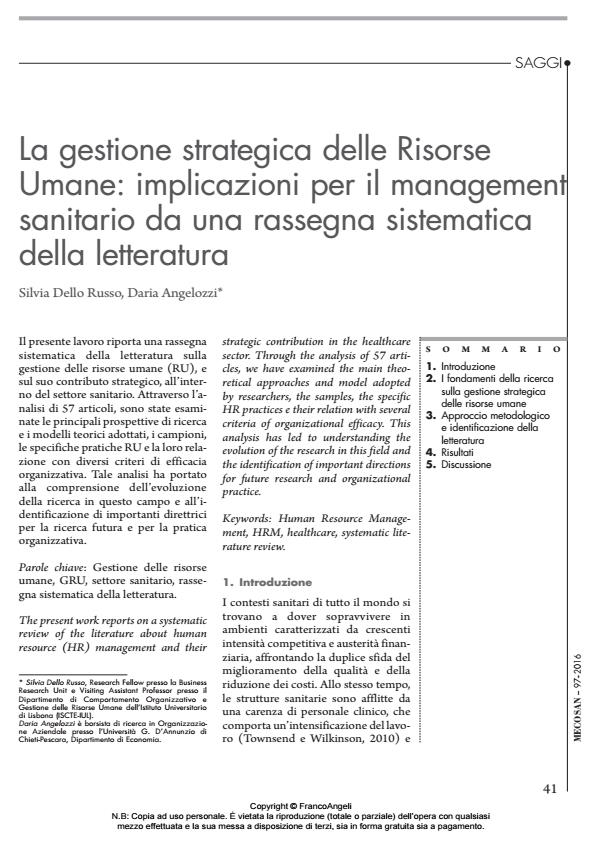La gestione strategica delle Risorse Umane: implicazioni per il management sanitario da una rassegna sistematica della letteratura
Titolo Rivista MECOSAN
Autori/Curatori Silvia Dello Russo, Daria Angelozzi
Anno di pubblicazione 2016 Fascicolo 2016/97
Lingua Italiano Numero pagine 29 P. 41-69 Dimensione file 23707 KB
DOI 10.3280/MESA2016-097004
Il DOI è il codice a barre della proprietà intellettuale: per saperne di più
clicca qui
Qui sotto puoi vedere in anteprima la prima pagina di questo articolo.
Se questo articolo ti interessa, lo puoi acquistare (e scaricare in formato pdf) seguendo le facili indicazioni per acquistare il download credit. Acquista Download Credits per scaricare questo Articolo in formato PDF

FrancoAngeli è membro della Publishers International Linking Association, Inc (PILA)associazione indipendente e non profit per facilitare (attraverso i servizi tecnologici implementati da CrossRef.org) l’accesso degli studiosi ai contenuti digitali nelle pubblicazioni professionali e scientifiche
Il presente lavoro riporta una rassegna sistematica della letteratura sulla gestione delle risorse umane (RU), e sul suo contributo strategico, all’interno del settore sanitario. Attraverso l’analisi di 57 articoli, sono state esaminate le principali prospettive di ricerca e i modelli teorici adottati, i campioni, le specifiche pratiche RU e la loro relazione con diversi criteri di efficacia organizzativa. Tale analisi ha portato alla comprensione dell’evoluzione della ricerca in questo campo e all’identificazione di importanti direttrici per la ricerca futura e per la pratica organizzativa.
Parole chiave:Gestione delle risorse umane, GRU, settore sanitario, rassegna sistematica della letteratura
- Gestire il personale in Sanità: una mappatura delle caratteristiche della Funzione Risorse Umane nel contesto italiano Marta Barbieri, Lorenza Micacchi, Roberta Montanelli, Francesco Vidè, in MECOSAN 114/2020 pp.33
DOI: 10.3280/MESA2020-114003
Silvia Dello Russo, Daria Angelozzi, La gestione strategica delle Risorse Umane: implicazioni per il management sanitario da una rassegna sistematica della letteratura in "MECOSAN" 97/2016, pp 41-69, DOI: 10.3280/MESA2016-097004